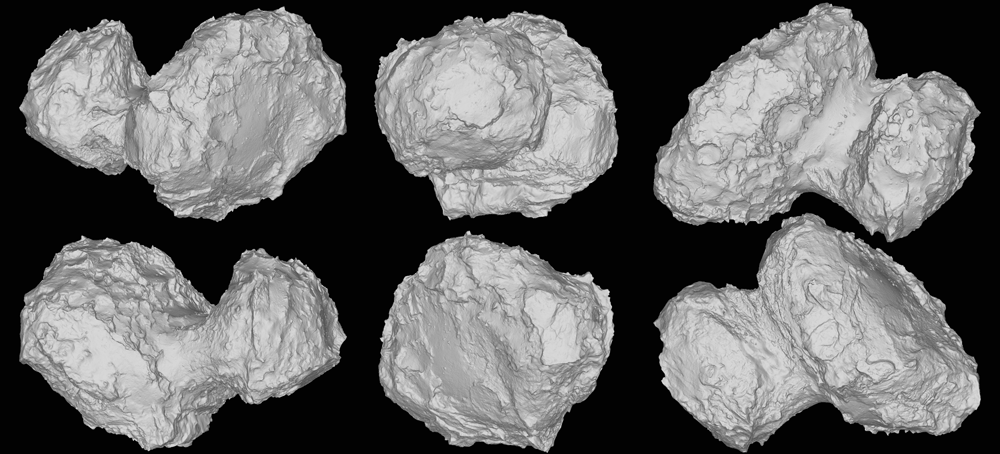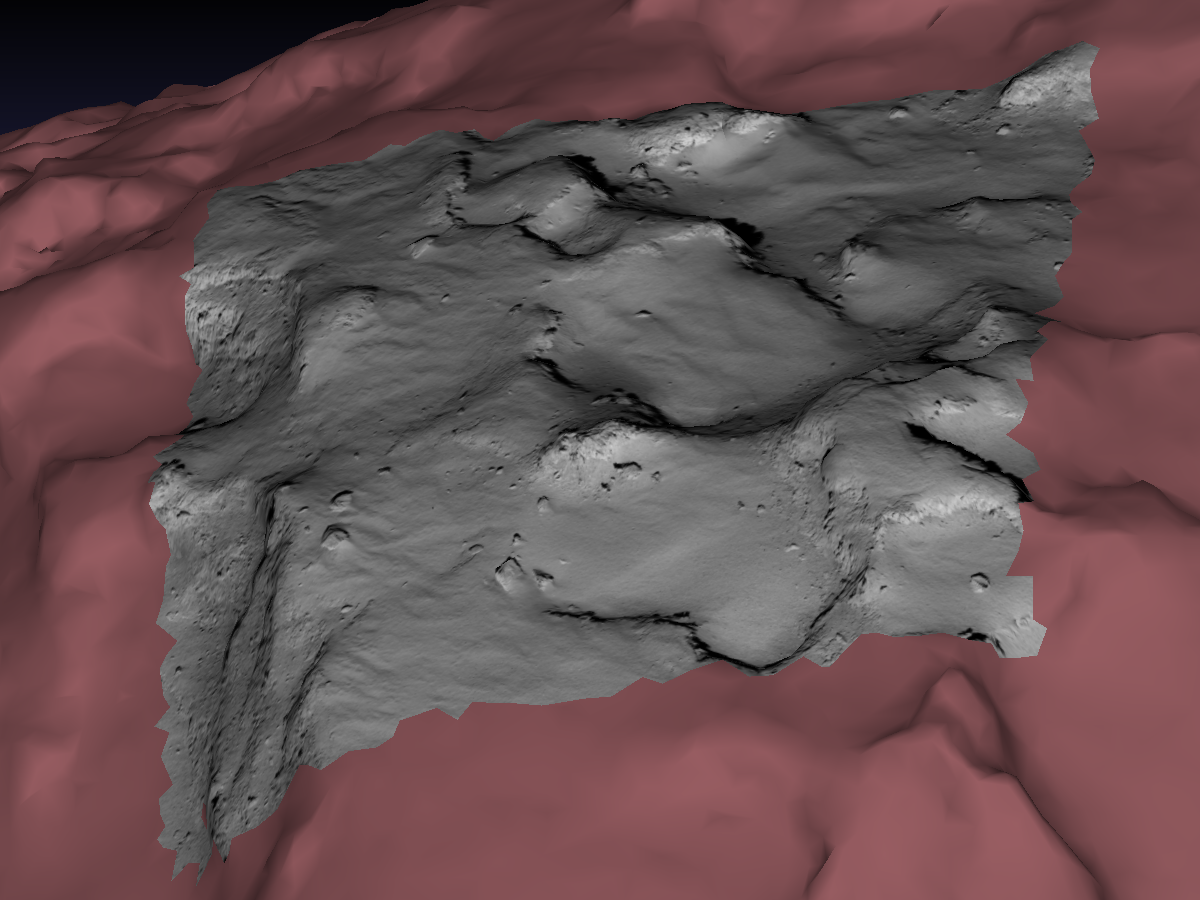


In March 2004, the European Space Agency (ESA) launched its Rosetta spacecraft to investigate comet 67P/Churyumov-Gerasimenko (C-G). After a ten year journey the Rosetta spacecraft reached C-G. Within the first month at the comet, the OSIRIS (Optical, Spectroscopic and Infrared Remote Imaging System) camera system (Keller et al., 2007), acquired several hundred images of the illuminated surface of C-G (mainly on the northern hemisphere) using the Narrow Angle Camera (OSIRIS NAC) (Sierks et al., 2015). This dataset was used for the derivation of a shape model of the comet's nucleus by stereo-photogrammetric methods (SPG). The high-resolution shape model consists of more than 8 million vertices (16 million facets) at 2 m horizontal sampling. This SPG SHAP4S shape model and the SPG method are described in Preusker et al. (2015).
For access to the SPG SHAP4S shape model, please contact: Frank.Preusker(at)dlr.de
Preusker, F. et al. 2015. Shape model, reference system definition, and cartographic mapping standards for comet 67P/Churyumov-Gerasimenko - Stereo-photogrammetric analysis of Rosetta/OSIRIS image data. Astronomy & Astrophysics, 583, A33, 2015.
Sierks, H. et al., 2015. On the nucleus structure and activity of comet 67P/Churyumov-Gerasimenko, Science, 347, DOI: 10.1126/science.aaa1044, 2015.
Keller, H. U. et al., 2007. OSIRIS- The scientific camera system onboard Rosetta, Space Science Reviews, Vol. 128, Issue 1-4, pp. 433-506. DOI: 10.1007/s11214-006-9128-4/201015074.

Using additional image data that were acquired until February 2016, we were able to derive an improved shape model of C-G that now also covers the southern hemisphere and improves the quality and level of detail of some areas at low northern latitudes. This SPG SHAP7 shape model consists of 44 million facets (about 1-1.5 m point spacing) and is the first high-resolution global shape model of the nucleus of a comet. The model itself and some of its key characteristics are described in Preusker et al. (2017).
For access to the SPG SHAP7 shape model, please contact: Frank.Preusker(at)dlr.de
Preusker, F. et al. 2017. The global meter-level shape model of comet 67P/Churyumov-Gerasimenko. Astronomy & Astrophysics, 607, L1, 2017.

As one of the DLR contributions to the EU Horizon 2020 MiARD project (Multi-instrument analysis of Rosetta data - Establishing a new paradigm for cometary activity), we used precise orbit and pointing information in order to combine OSIRIS image texture with the SPG SHAP7 shape model. For more than 15,000 OSIRIS images (all OSIRIS NAC images of filter F22 and all WAC filter F18 images), we derived textured 3D models (full image resolution on a 500K facet version of SHAP7) in binary PLY format with accompanying JPG texture files for the application in standard 3D viewing tools.
For access to the textured SHAP7 shape models (the entire dataset of about 96 GByte or for any subset of it), please contact: Frank.Preusker(at)dlr.de
Last update: 21/08/2018 17:44